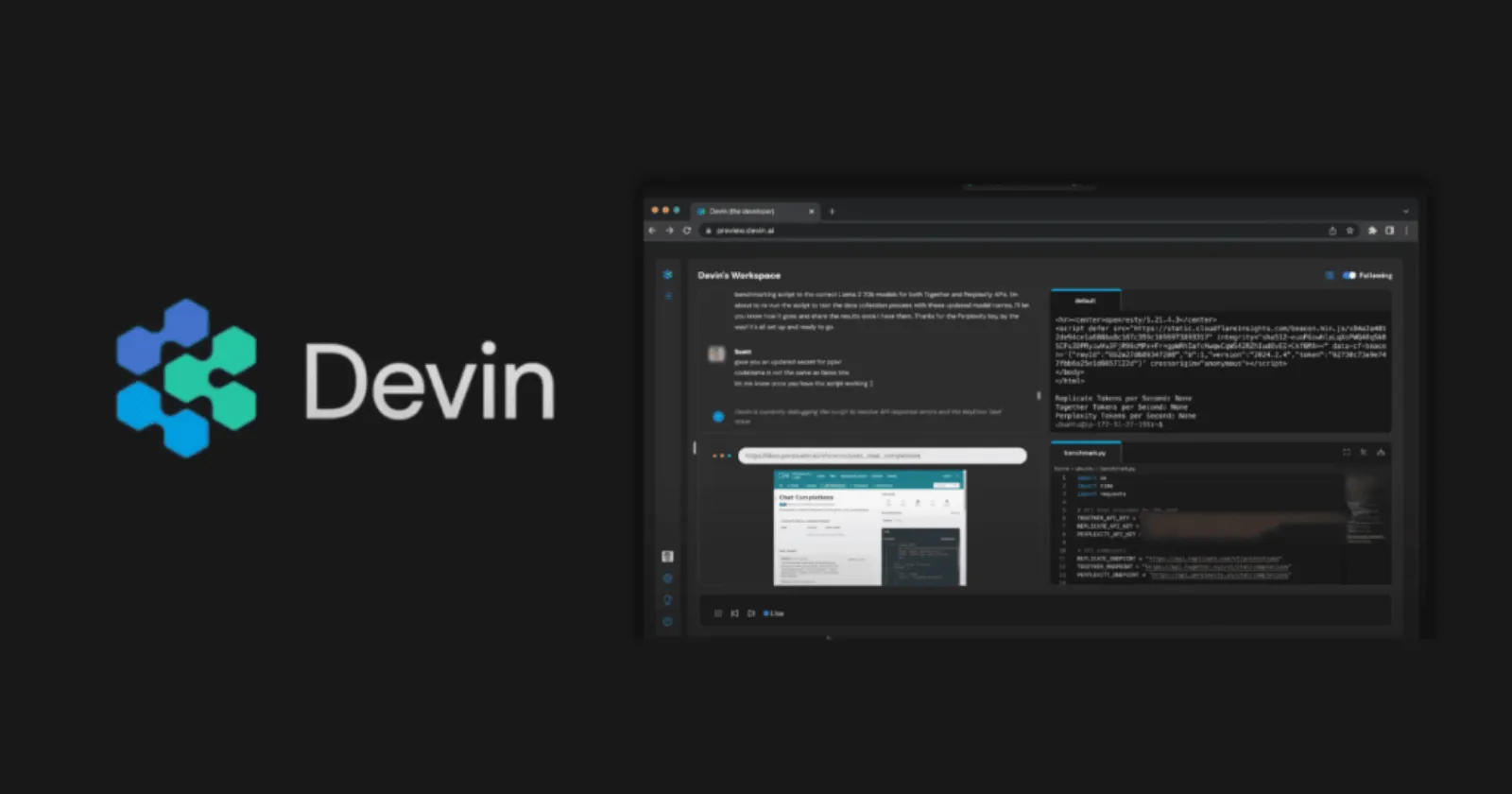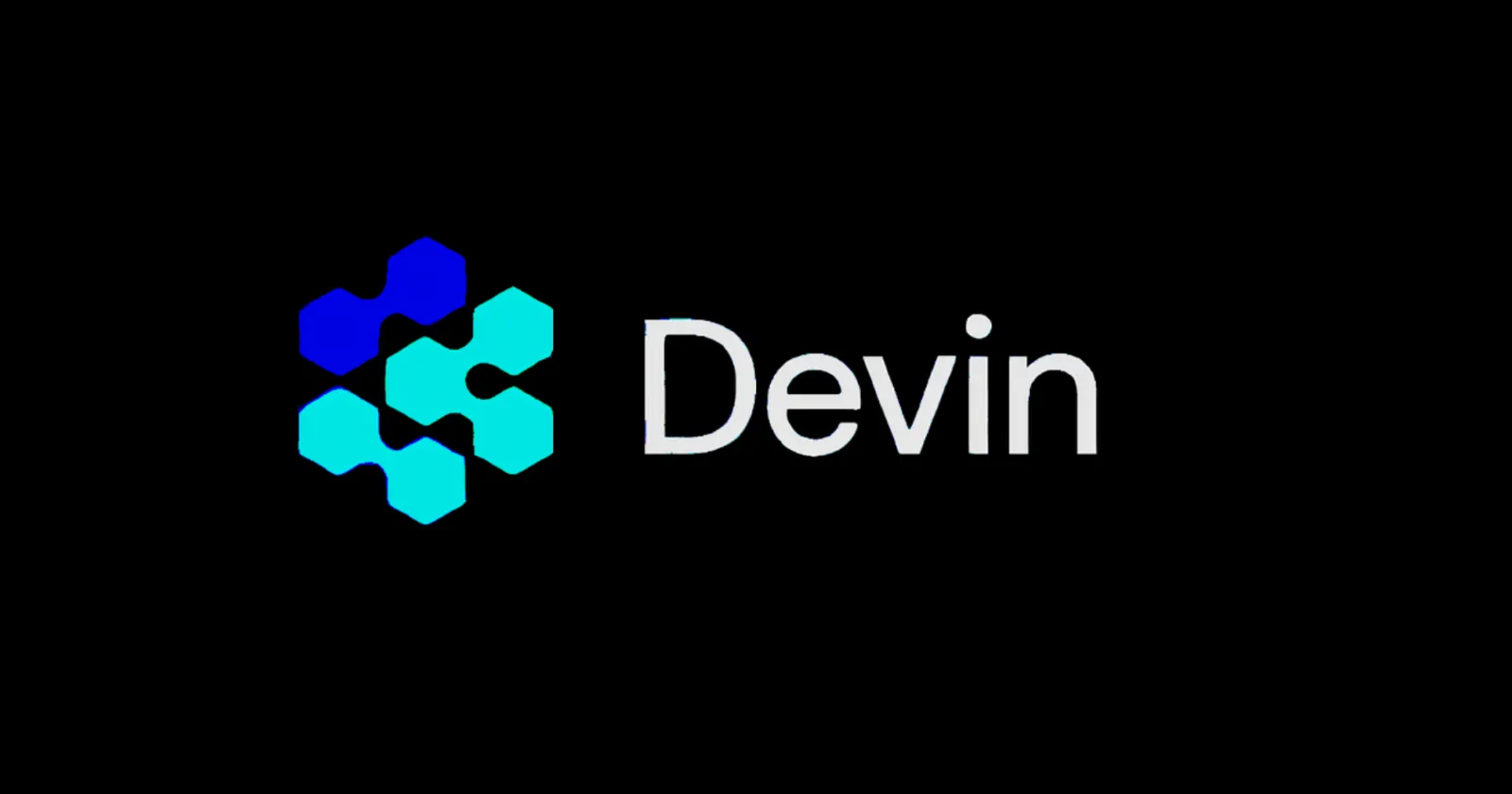Devin AI Autonomous Coding review
Discover how Devin AI’s autonomous coding capabilities are saving engineering teams 12x development time and 20x costs in 2025. Is this AI engineer worth adopting?
Table of Contents
- Devin AI Autonomous Coding Revolution
- What Is Devin AI?
- Featured Snippet Optimization
- Why It Matters in 2025
- Step-by-Step: How Devin Works
- 1. Environment Setup
- 2. Assignment and Communication
- 3. Planning and Execution
- 4. Learning and Improvement
- Case Study: Nubank’s ETL Migration
- Pros & Cons of Devin AI
- Pros
- Cons
- Pricing & ROI
- How to Get Started with Devin
- 1. Define Your Use Cases
- 2. Start with a Limited Scope
- 3. Set Up the Environment
- 4. Monitor and Optimize
- Key Takeaways
- FAQ
- How is Devin different from GitHub Copilot or other coding assistants?
- What types of tasks is Devin best suited for?
- How accurate is Devin in completing coding tasks?
- What is the learning curve for implementing Devin?
- Is Devin secure enough for enterprise use?
Devin AI Autonomous Coding Revolution
According to a recent case study, Nubank’s core ETL migration project initially required over 1,000 engineers and an 18-month timeline, but with Devin AI, they completed the same project in just weeks with a 12x efficiency improvement and 20x cost savings (devin.ai, 2025). Meanwhile, a January 2025 evaluation found that despite considerable hype, Devin successfully completed just 15% of assigned tasks in independent testing.
TL;DR: Devin AI has fundamentally changed software engineering workflows through its ability to function as a fully autonomous coding agent. While not replacing human developers, it excels at handling repetitive refactoring tasks, migrations, and basic feature implementations. This article examines Devin’s capabilities, limitations, real-world impact, pricing, and how it fits into modern development teams – helping you decide if this revolutionary tool is worth integrating into your workflow.
What Is Devin AI?
Devin AI is an autonomous artificial intelligence software engineer developed by Cognition Labs that can independently handle complex coding tasks from conception to deployment without constant human oversight. Unlike traditional coding assistants that generate snippets within your IDE, Devin operates in its own sandboxed environment with access to development tools including a command line, code editor, browser, and planning interface.
The most distinctive feature of Devin is its autonomous nature – it can understand requirements, plan solutions, write code, debug issues, and deploy applications while communicating its progress in real time through platforms like Slack and GitHub.
Featured Snippet Optimization
Devin AI is an autonomous artificial intelligence software engineer that independently handles complete coding tasks from planning to deployment. Unlike code assistants that suggest snippets, Devin operates in its own environment with full access to development tools, enabling it to autonomously write, debug, test, and deploy software while collaborating with human engineers through platforms like Slack and GitHub.
Read also : AI Agent vs assistant difference
Why It Matters in 2025
The software development landscape has evolved dramatically since Devin’s initial release in March 2024. What began as a promising but limited tool has matured into a productivity powerhouse that’s reshaping how engineering teams function.
Several key factors have made Devin particularly relevant in 2025:
- Engineering Talent Shortage – The global shortage of skilled developers has intensified, with companies struggling to find qualified engineers. Devin offers a solution by handling routine coding tasks that would otherwise require human resources.
- Rising Development Costs – With the average software engineer salary exceeding $150,000 in many markets, the economic case for AI augmentation has become compelling. Devin’s ability to deliver 20x cost savings on certain projects represents a significant competitive advantage.
- Technical Debt Crisis – Many organizations face massive refactoring and migration projects. The Nubank case study demonstrated Devin’s particular strength in handling these large-scale, repetitive tasks that human engineers find tedious.
- Improved AI Capabilities – The release of Devin 2.0 in April 2025 brought substantial improvements, with the company claiming an 83% increase in task completion rate compared to its predecessor.
- Accessibility Revolution – Perhaps most significantly, Cognition Labs slashed Devin’s starting price from $500 to $20 per month, making it accessible to individual developers and small teams for the first time.
Step-by-Step: How Devin Works
Devin’s workflow differs significantly from traditional coding assistants. Here’s how it operates in practice:
1. Environment Setup
Devin works in a sandboxed computing environment that includes:
- Code Editor: A VSCode-like interface for writing and editing code
- Terminal/Shell: For running commands and scripts
- Browser: For accessing documentation, testing web applications, and more
- Planning Interface: For mapping out subtasks and strategies
This environment is isolated from your local system, which creates both advantages (security, consistency) and limitations (no direct access to your local codebase).
2. Assignment and Communication
There are multiple ways to interact with Devin:
- Direct Chat: Through Devin’s web interface
- Slack Integration: Assign tasks by tagging @Devin in Slack channels or threads
- GitHub Integration: Devin can create, review, and respond to PR comments
- Linear Integration: Tag @Devin in tickets or add a Devin tag to delegate tasks
- Voice Commands: Added in Devin 1.2, this allows verbal instructions
3. Planning and Execution
When given a task, Devin:
- Analyzes requirements and creates a step-by-step plan
- Breaks complex tasks into manageable subtasks
- Executes the plan while providing real-time progress updates
- Adapts to challenges and errors encountered during development
- Completes the task or presents its solution for review
With Devin 2.0’s Interactive Planning feature, developers can collaborate on refining the initial plan before execution begins.
4. Learning and Improvement
One of Devin’s most powerful capabilities is its ability to learn from experience:
- Pattern Recognition: Identifies recurring issues across similar tasks
- Tool Building: Creates scripts and tools to automate repetitive subtasks
- Fine-Tuning: Can be fine-tuned on company-specific codebases (Enterprise plan)
This learning capability was demonstrated in the Nubank case, where Devin “contributed to its own speed improvements by building itself classical tools and scripts it would later use on the most common, mechanical components of the migration” (devin.ai, 2025).
Case Study: Nubank’s ETL Migration
Nubank, a major financial services company, provides the most compelling example of Devin’s real-world impact. Their challenge was massive: migrating an 8-year-old ETL monolith with millions of lines of code to sub-modules.
Before Devin:
- Required 1,000+ engineers
- 18-month projected timeline
- Monotonous, repetitive work taking engineers away from core product development
With Devin:
- 12x improvement in engineering efficiency
- 20x cost savings
- Project completed in weeks instead of months
- Multiple business units successfully migrated
The key factor in this success was fine-tuning. According to Nubank’s case study: “The Nubank team helped to collect examples of previous migrations their engineers had done manually, some of which were fed to Devin for fine-tuning. Against this evaluation set, we observed a doubling of Devin’s task completion scores after fine-tuning, as well as a 4x improvement in task speed.”
This pattern of success has been replicated across other large-scale migration projects:
- 16x acceleration for a data infrastructure migration to Databricks
- 70% reduction in time spent on .NET migration
- 22x more cost-effective Jupyter notebook migration
Read also: Open Source Image Models
Pros & Cons of Devin AI
Pros
- Autonomy: Handles entire workflows without constant supervision
- Tool Integration: Works with Slack, GitHub, and Linear for seamless collaboration
- Versatility: Effective for various tasks from bug fixing to feature implementation
- Learning Capability: Improves over time and can be fine-tuned for specific needs
- Documentation: Creates comprehensive documentation of its work
- Cost Efficiency: Significantly reduces engineering hours for repetitive tasks
Cons
- Workflow Limitations: “Not having direct access to the code while Devin works on it makes the back-and-forth much slower and more prone to sending errors on PRs that could have been caught during development” (Qubika, 2025)
- Inconsistent Performance: “More concerning was our inability to predict which tasks would succeed. Even tasks similar to our early wins would fail in complex, time-consuming ways” (The Register, 2025)
- Complexity Ceiling: Struggles with highly complex or creative coding challenges
- Learning Curve: Requires different prompt engineering and workflow adaptation
- Security Considerations: Sending code to external environments raises compliance issues in some industries

Pricing & ROI
Devin’s pricing structure underwent a major revision with the 2.0 release in April 2025:
| Plan | Price | Features | Best For |
|---|---|---|---|
| Individual | $20/month minimum, then pay-as-you-go | Basic access, 9 ACUs included | Individual developers, small projects |
| Team | $200/month | 100 ACUs, team collaboration features | Small-to-medium development teams |
| Enterprise | Custom pricing | 250+ ACUs, VPC deployment, fine-tuning capability | Large organizations, sensitive projects |
The pricing is based on Agent Compute Units (ACUs), which measure the resources Devin uses. More complex tasks consume more ACUs.
ROI Calculation Factors:
- Average engineer hourly cost ($75-150/hour)
- Task completion time (human vs. Devin)
- Task success rate
- Review and correction time
For repetitive, well-defined tasks like migrations, the ROI is substantial – as demonstrated by Nubank’s 20x cost savings. However, for creative, complex, or highly specialized development work, the ROI may be less compelling.
How to Get Started with Devin
If you’re considering implementing Devin in your workflow, here’s a structured approach:
1. Define Your Use Cases
Based on current performance patterns, Devin excels at:
- Code migrations and refactoring
- Basic feature implementations
- Bug fixing and testing
- Documentation generation
It’s less effective for:
- Highly creative development work
- Complex visual implementations (e.g., Figma designs)
- Projects requiring specialized domain knowledge without extensive fine-tuning
Read also : Voice Cloning Ethics Legal Guide
2. Start with a Limited Scope
Begin with a well-defined, self-contained project that matches Devin’s strengths:
- Choose a repetitive task with clear patterns
- Ensure you have examples of successful completions
- Define clear acceptance criteria
3. Set Up the Environment
- Sign up for Devin (start with Individual plan)
- Connect necessary repositories
- Configure integration with your communication tools (Slack, GitHub)
- Prepare documentation and context for your initial project
4. Monitor and Optimize
- Closely review Devin’s outputs initially
- Provide clear, constructive feedback
- Document successful patterns for future reference
- Track time and cost savings to calculate actual ROI
Key Takeaways
The emergence of Devin represents a significant shift in software engineering, but with important nuances:
- Transformative for Specific Tasks: Devin excels at large-scale migrations, refactoring, and repetitive development work, potentially saving thousands of engineering hours.
- Complements Rather Than Replaces: Despite its “autonomous engineer” branding, Devin functions best as a specialized team member for appropriate tasks, not as a replacement for human developers.
- Requires New Workflows: Success with Devin demands adapting development processes and learning to collaborate effectively with an AI agent.
- Economic Impact Is Substantial: For the right projects, the cost savings can be dramatic – 12-20x efficiency improvements represent a competitive advantage.
- Rapidly Evolving: With significant improvements between versions and a dramatic price drop, Devin’s capabilities and accessibility continue to advance quickly.
If you’re facing large migration projects, struggling with technical debt, or simply want to free your engineers from repetitive tasks, Devin may be worth exploring – but approach with realistic expectations about its current capabilities and limitations.
Read also : De-Risking AI Adoption: Governance Check-list
FAQ
How is Devin different from GitHub Copilot or other coding assistants?
Unlike coding assistants that suggest snippets within your IDE, Devin operates as an autonomous agent in its own environment with access to development tools like a terminal, browser, and code editor. It can independently handle complete workflows from planning to deployment, while traditional assistants augment your coding process but require constant direction.
What types of tasks is Devin best suited for?
Devin excels at repetitive, well-defined tasks such as code migrations, refactoring, bug fixing, and implementing features with clear requirements. It’s particularly valuable for large-scale projects that would otherwise require many engineering hours of tedious work, as demonstrated by Nubank’s ETL migration case study.
How accurate is Devin in completing coding tasks?
Devin’s accuracy varies significantly based on task complexity. On the SWE-bench benchmark, Devin correctly resolved 13.86% of issues end-to-end without assistance, compared to 1.96% for the next best model. However, independent testing has shown mixed results, with performance ranging from impressive to problematic depending on the specific task.
What is the learning curve for implementing Devin?
There’s a moderate learning curve for effectively using Devin. Teams need to adapt their workflows, learn effective prompting techniques, and develop strategies for reviewing and integrating Devin’s work. Organizations that have successfully implemented Devin typically report a 2-4 week adjustment period before seeing significant benefits.
Is Devin secure enough for enterprise use?
Devin Enterprise offers security features designed for enterprise environments, including VPC deployment, keeping data within controlled environments, and SSO integration. However, organizations with strict compliance requirements should carefully evaluate the security implications of sending code and project information to an external service.
Author Bio:
Jordan Chen is the Lead AI Engineering Strategist at TechFusion. With over 15 years in software development leadership, Jordan specializes in integrating AI tools into enterprise engineering workflows. He has implemented Devin and similar tools across multiple Fortune 500 companies. Connect on LinkedIn.





